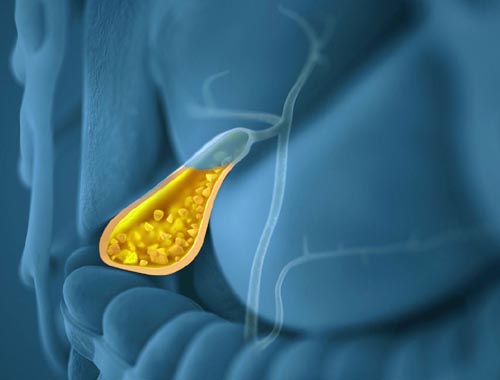Cholecystitis
Cholecystitis is defined as inflammation of the gallbladder that occurs most commonly because of an obstruction of the cystic duct from cholelithiasis. Ninety percent of cases involve stones in the cystic duct (ie, calculous cholecystitis), with the other 10% of cases representing acalculous cholecystitis. Risk factors for cholecystitis mirror those for cholelithiasis and include increasing age, female sex, certain ethnic groups, obesity or rapid weight loss, drugs, and pregnancy. Although bile cultures are positive for bacteria in 50-75% of cases, bacterial proliferation may be a result of cholecystitis and not the precipitating factor. Acalculous cholecystitis is related to conditions associated with biliary stasis, including debilitation, major surgery, severe trauma, sepsis, long-term total parenteral nutrition (TPN), and prolonged fasting. Other causes of acalculous cholecystitis include cardiac events; sickle cell disease; Salmonella infections; diabetes mellitus; and cytomegalovirus, cryptosporidiosis, or microsporidiosis infections in patients with AIDS. (See Etiology.) For more information, see the Medscape Reference article Acalculous Cholecystopathy. Uncomplicated cholecystitis has an excellent prognosis, with a very low mortality rate. Once complications such as perforation-gangrene develop, the prognosis becomes less favorable. Some 25-30% of patients either require surgery or develop some complication.
